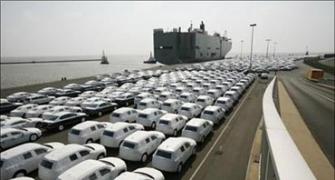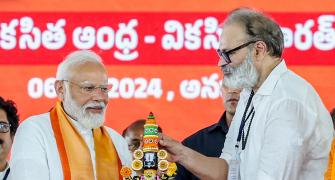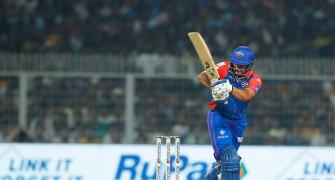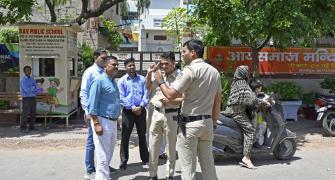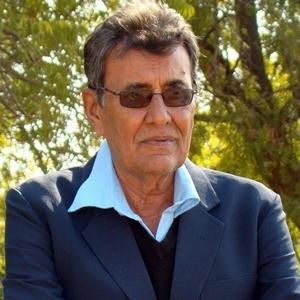While the top brass of the Delhi police have taken the joint probe with the National Investigation Agency in 'good spirit', the men at the ground level seem to be dejected. Sahim Salim reports.
Even as multiple investigative agencies grapple with four different terror emails sent by two different terror organisations, a cold war seems to have cropped up between two of the major investigating units of Wednesday's Delhi high court blast the National Investigation Agency and the Delhi police.
The top brass of the Delhi police its commissioners and other administrative officials have taken the joint probe in 'good spirit', but the men on the ground level, the inspectors and other junior officers of the special cell seem to be irked.
As soon as Home Minister Chidambaram announced that the National Investigation Agency will be taking over Wednesday's blast probe, officers of Delhi police's anti-terror wing were disappointed.
"It was demoralising. Our officers have worked hard to maintain the reputation of Delhi's anti-terror wing. On the very first day, the investigations were handed over to the NIA," an inspector of the special cell said. This is the first time that a terror-case was handed over directly to the NIA.
The special cell, which came into being in the 1990s to investigate terror-related cases, was instrumental in busting the Indian Mujahideen module within weeks of Delhi serial blasts of 2008.
Inspector Mohan Chand Sharma of the special cell had led the team to the encounter at Batla House in Jamia Nagar, which led to the death of two alleged terrorists. Sharma, who lost his life in the encounter, had been the most well-known face of the special cell, with over 35 terrorist encounters to his name.
The morale of the force, which has over 500 personnel, was at an all-time high then. The subsequent interrogation of the alleged members of the IM had created a pool of intelligence for anti-terrorist wings of other state police forces in the country.
The first signs of trouble showed up when the Delhi police went ahead and released the sketches of terror-suspects in the case. An officer of the special cell told rediff.com that the NIA expressed dissatisfaction over the accuracy of the sketches.
"We prepared the sketches on the basis of as many as seven eyewitness accounts. After its preparation, we showed it to all the eyewitnesses who gave their nod. Now, the NIA wants to prepare its own sketch," the officer said.
A team of about 10 officers posted with the cyber-cell of the Delhi police makes these sketches. Admittedly, however, these sketches are not of much help in actually apprehending the accused.
"We have not really arrested any terror suspects on the basis of these sketches. But preparing sketches is the first stage of any terror investigation. If citizens don't recognise the persons, our sources usually circulate them within their network to see if any resemblances pop up," a special cell officer said.
In fact, one of the major reason that the May blast at the high court hit a dead end was that there were no eyewitnesses. The probe into this blast took officers of the special cell to at least three different states - Maharashtra, Uttar Pradesh and Rajasthan.
Though officially NIA has been given both these cases, special cell officers say that it was they who conducted the initial on-spot and eyewitness investigations.
"It was our officers who interviewed witnesses to come out with the two sketches we prepared. We visited hospitals, re-initiated our surveillance that had hit a dead-end and collected samples. On the very first day, our officers put over 200 connections on surveillance," an officer said.
Rediff.com has learnt that in addition to the 200 mobile phone connections, special cell's technical surveillance includes about 30 Voice Over Internet Protocol (VOIP) calls. Latest intelligence within the special cell has indicated that the suspected 'sleeper modules of the IM' has been using this kind of communication.
When contacted, Special Commissioner of Police (Special Cell) P N Aggarwal said the special cell worked in 'harmony' with national level investigative agencies like the NIA. He denied the presence of any cold war between agencies probing the high court blast.
As far as the emails police and media houses have received are concerned, the special cell and NIA officers said that they are taking investigations into them 'very seriously.'
Though Chidambaram has termed the third email as amateurish, Delhi police say that the mail could actually be written by the IM.
"IM's cyber cell was very sophisticated. They kept records, newspaper clippings and synchronised the sending of their well researched mails just before or just after a blast they carried out. This cyber cell of theirs was busted in 2008. Thus the very amateurish nature of the mails we have received from them could point to the fact that it may
actually have been drafted by them," an officer said.
Meanwhile, three Delhi police teams of 150 men each have been constituted to investigate the blasts. A total of
450 men will report to two deputy commissioners of police Arun Kampani (special cell) and Ashok Chand (crime branch). Of these two officers, Ashok Chand will brief the NIA of their progress.

